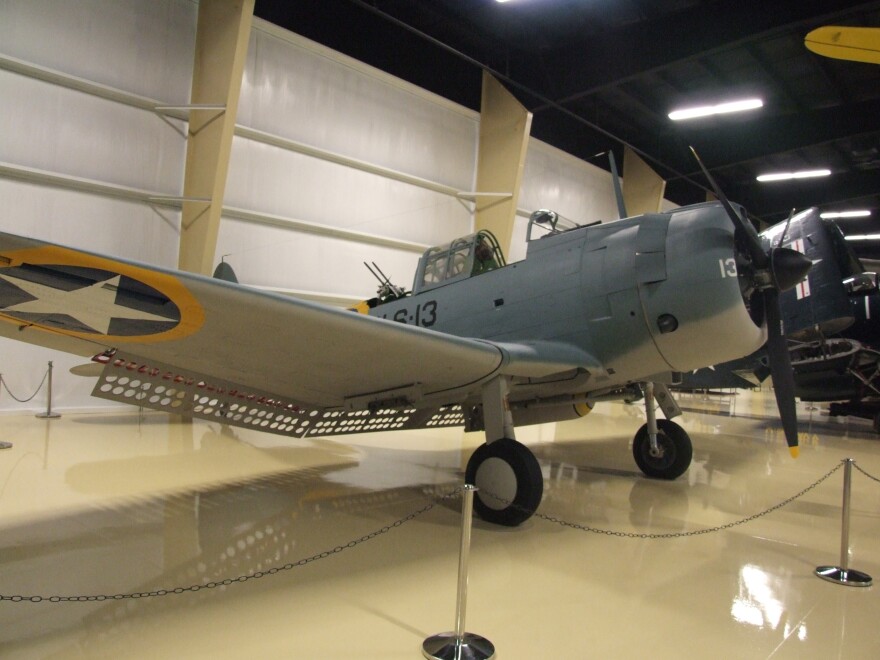Three World War II era planes that were once at the bottom of Lake Michigan have found a home at the Air Zoo in Portage. It’s the only museum in the country that has been tasked with restoring planes for the Naval Aviation Museum. The Air Zoo has already restored one submerged plane and is working to revive two more.

Senior Conservator Greg Ward says working on these sunken aircraft has been like solving a puzzle. Take the FM-2 Wildcat, for example. It sunk on December 28th, 1944.
“The mystery was solved when we took the engine apart and found the spun bearing on the crank shaft and discovered why it quit. It wasn’t the pilot’s fault. The engine seized up from oil starvation,” Ward explains.
Ward says that’s when the pilot made a miraculous escape.
“So he nose-dived it into the water. It rolled upside down. It didn’t sink right away, but he was holding his breath underwater in the cockpit and then all this noise occurred. The ship ran over it with him still in there holding his breath,” he says.

Despite being run over by a carrier ship, Ward says the Wildcat’s pilot lived to be 86 years old.
“It’s very interesting because you know the last person who really touched those controls was the pilot,” says Ward.
Ward says before they can begin major work on a plane, they have to clean it and photograph every detail. He says the Wilcat was covered in algae and tons of invasive quagga and zebra mussels:
“They cause corrosion - they accelerate the process. That’s why it’s virtually an emergency now to get the rest of the airplanes that are worth saving out of Lake Michigan. It used to be they were better off just sitting on the bottom until we could afford to pull another one out. Now they’re predicting five more years they’ll be virtually worthless. I mean, not savable.”
Unfortunately, money is still an issue. As a result, Ward says very few historic planes have been pulled from Lake Michigan. He says the Air Zoo has about 75 volunteers working on the Wildcat. Without them, he says the museum probably couldn’t afford to restore these corroded planes.
Air Zoo President and CEO Troy Thrash says unlike many restorations, work on these planes is in full view of the public.
“We want every person who comes to the Air Zoo to be able to see the work that we’re doing real-time. So that if they come every week or every six months or year, they’re going to be able to see progress constantly being made,” he says.
The Air Zoo also works to get local schools involved in small jobs like cleaning or sanding. Ward says he hopes some of those kids will be inspired to pursue his job - a dying art.
“In this mix of young people, they’re going to be our replacements. I’m convinced there are going to be some people who want to do this as a career," he says. "But you have to plant the seed real early, get them excited.”
Ward estimates the Wildcat will be finished in three to eight years, but that all depends on funding. Once it’s done, the Wildcat will be display at Chicago’s Navy Pier along with the names of the volunteers.
“They can someday take their grandchildren there and show them their name on the list. Tell them, ‘I helped restore that,’” says Ward.








